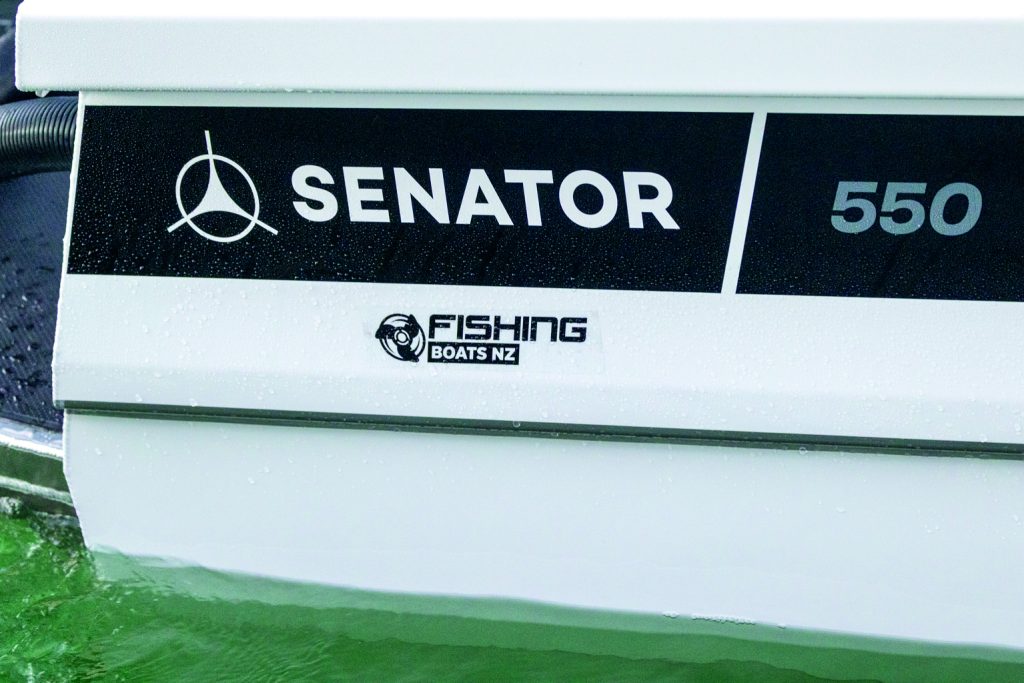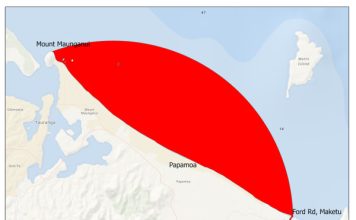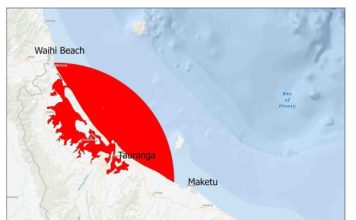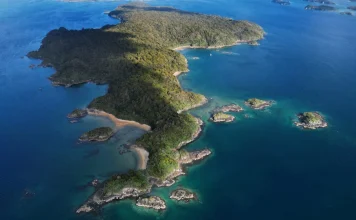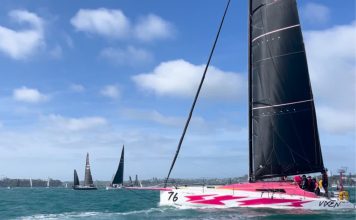Hawkes Bay’s Senator Boats is best known for its range of strong, capable, trailerable aluminium ‘chamber’ boats, respected for their sea-keeping abilities and durability.
Senator Boats has continuously invested in developing new models and upgrading and improving its range. Recent models that illustrate the company’s current design philosophy include the Senator 500 we reviewed in late 2023 and the new 550 Hardtop model featured here, both of which champion Senator’s innovative ‘Mission Modular’ system.
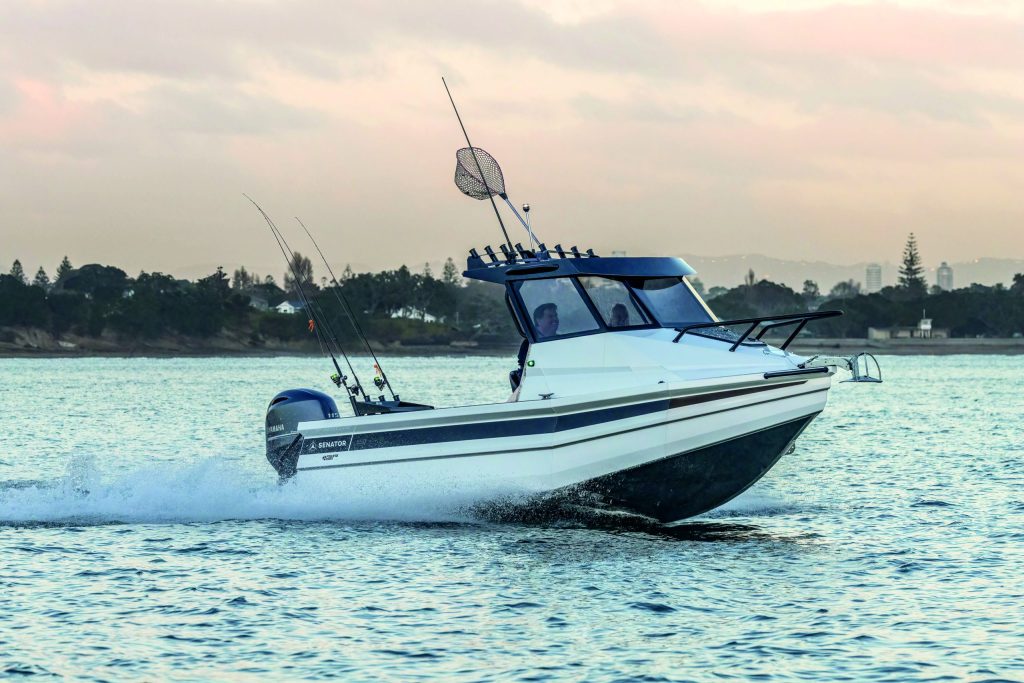
In many respects the new 550 is the bigger brother of the 500, featuring many of the same modular layout options but benefiting from a stylish hardtop that offers protection from the elements. Like the 500, essentially the basic boat can be configured however you like from a huge range of Senator Boats options, all designed to complement this model. This boat is comprehensively optioned.
Senator names its boats conservatively, using actual hull length excluding bowsprit and outboard rather than quoting length overall. So, the 550 is really 5.65m long, which explains in part why it feels like a bigger boat than its model name would suggest. It’s also relatively beamy, and unlike some similar boats, the foam-filled aluminium pontoons that wrap around the vessel don’t impact much on interior volume, so it feels spacious inside.
That sense of space is amplified by a relatively short, fully-lined hardtop with a roof that doesn’t extend too far over the cockpit and a wide opening to the forward cabin, which, while useful to seat the kids out of the weather, is meant primarily for storage.
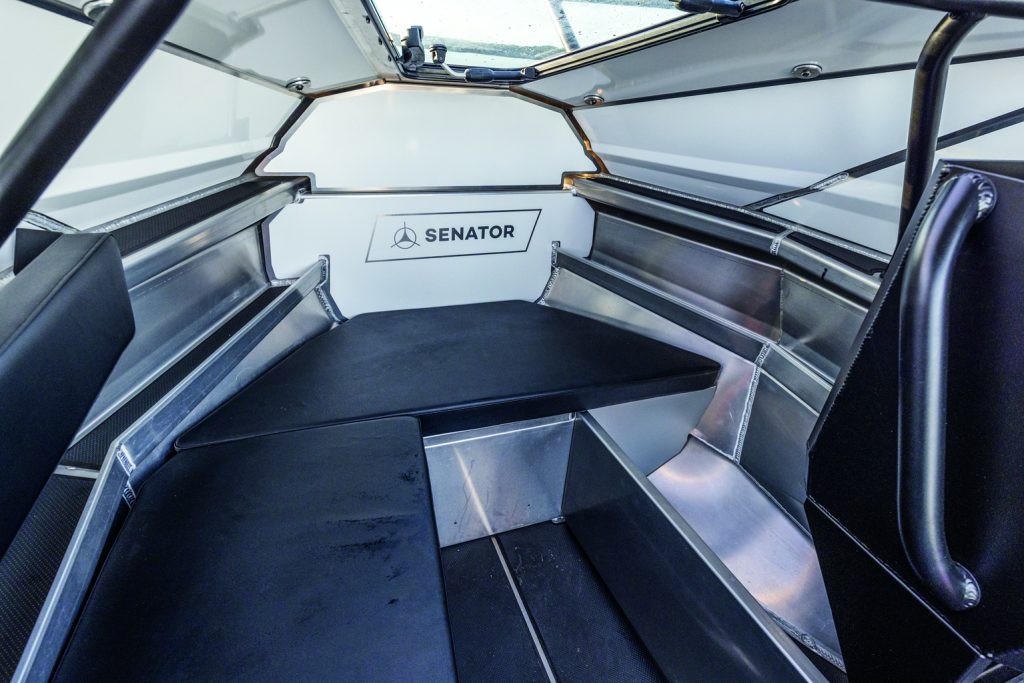
Inside, there’s space under the seats on the port side, two-tier shelving, and secure bin-style stowage to starboard, which can be specified as another seat/berth. Even the hardtop roof is furnished with mounting points for optional extras like roof racks, extra rod holders and radio aerials.
The pod-style helm console is minimal by design with enough fascia space for a row of Senator LED-lit switches, a deluxe Senator-branded steering wheel, Yamaha engine gauges, and the Garmin VHF radio. The ignition key and anchor winch controls are off to the side.
A 9.5-inch Garmin 95SSV MFD is bracket-mounted above the console, flanked by a pair of Railblaza universal mounts – among many such mounts strategically located around the vessel. The throttle control is nicely positioned to the right, with useful shelving beneath.
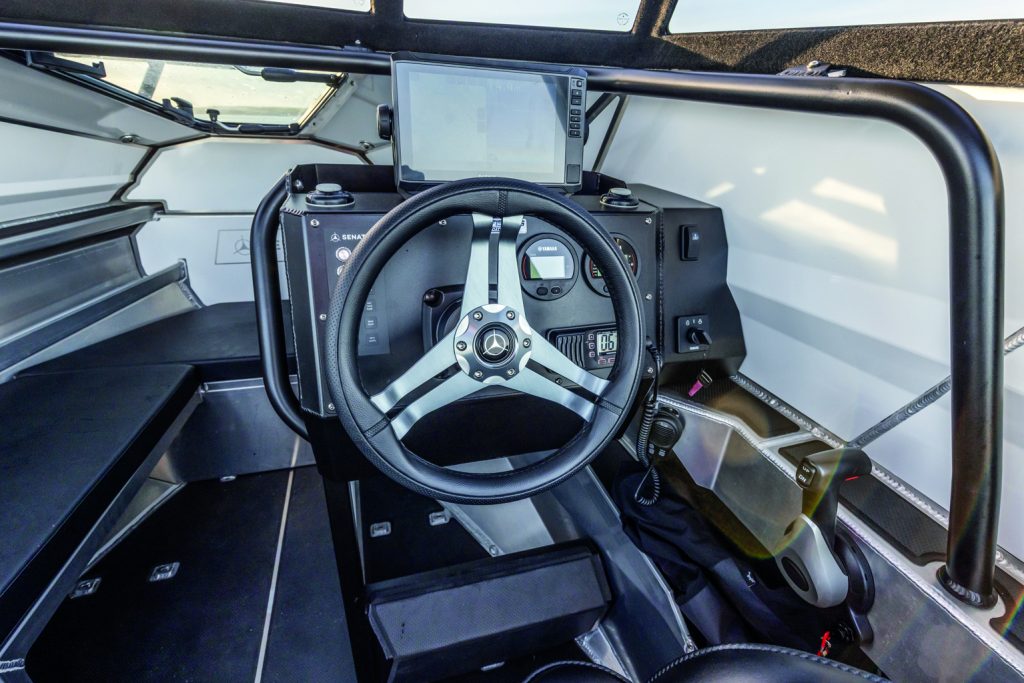
There’s a powder-coated grabrail for the helm, with similar robust rails wrapping right around the base of the windscreens, positioned beside the passenger and driver’s seats, down either side, across the top of the hardtop opening, and along the middle of the hardtop ceiling (x2). There are also grabrails on the sides of the hardtop for negotiating the narrow side decks on your way forward, though it’s usually better to stand in the forecabin and reach through the large hatch. A remotely operated Lone Star drum winch and a Sarca anchor take care of anchoring duties, with winch access through the anchor locker hatch on the foredeck or via a removable panel in the forward bulkhead.
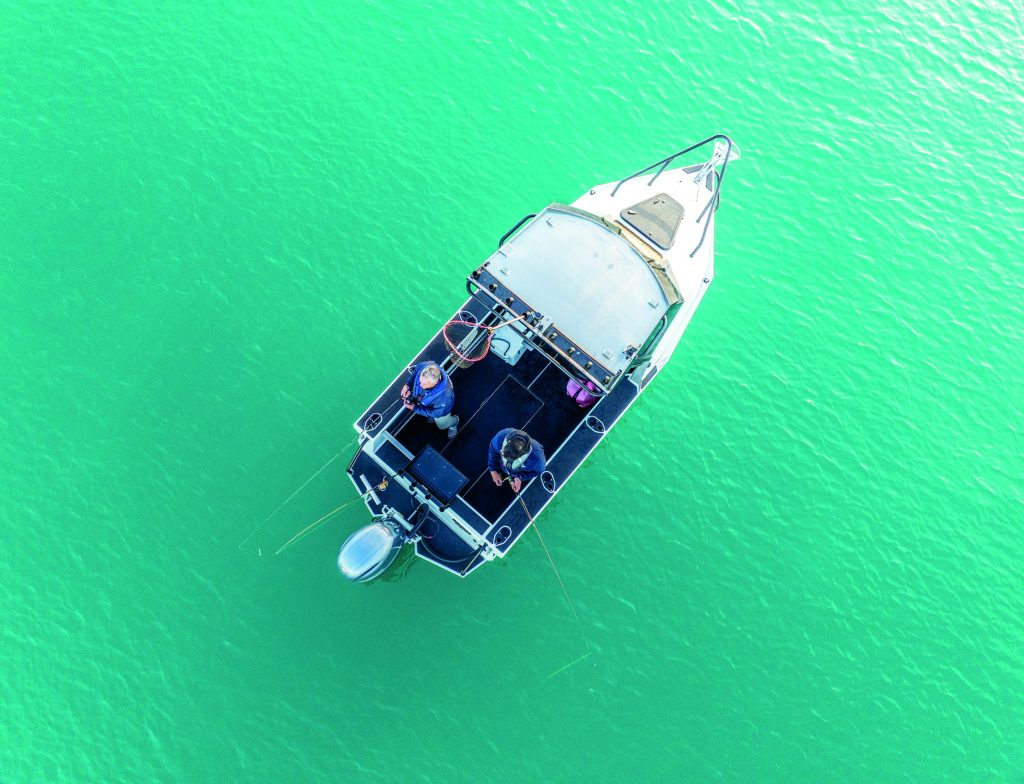
As reviewed, there were two seats, both comfortable swivelling bucket types with fold-up bolsters for standing support underway. Footrests are built-in at a comfortable height, and the vinyl upholstered seats slide fore and aft. There’s space beneath the seat bases to stow gear – in our case, the vessel’s safety grab bag on one side and a 70-litre Icey-Tek fish bin on the other. The bin can also serve as a seat if required.
With a relatively short hardtop, there’s plenty of cockpit space and nice high gunwales to complement the boat’s excellent stability. It feels safe and secure, and there’s no danger of kids or pets falling overboard. Toe-room is better than most other boats using this style of construction; there are cleats forward, amidships, and aft, which I like, and an LED floodlight illuminates the cockpit at night.
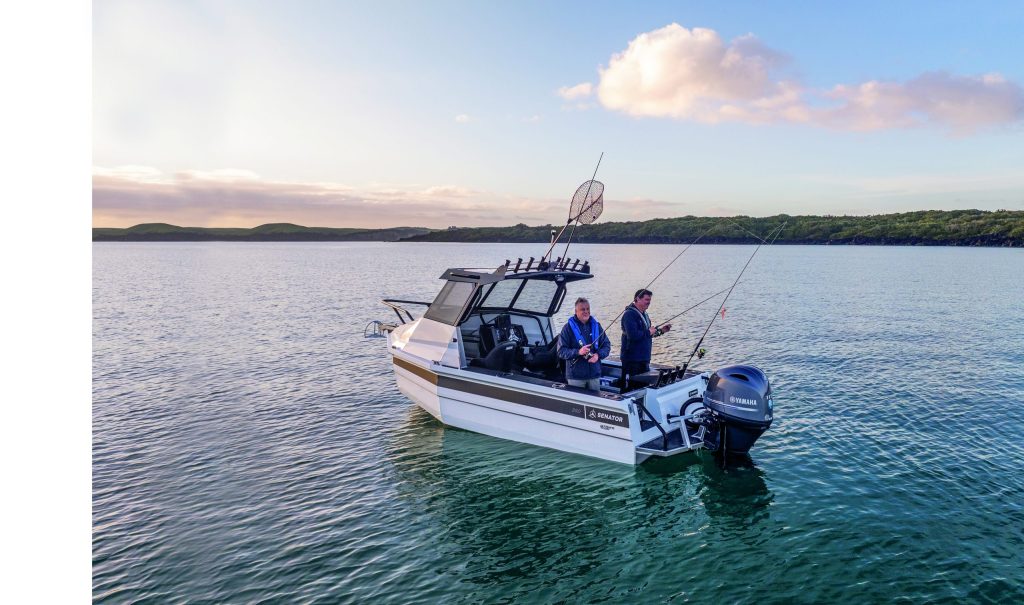
Black Nano-Dot flooring feels comfortable underfoot and is also used on the boat’s coamings, which are plenty wide enough to sit on. These are equipped with three through-coaming combination rod holders-cup/sinker holders, suitably angled for trolling duties. Nano-Dot also covers the swim platform, which is wide enough for fishing from or walking behind the outboard, as well as the transom coaming and the step-through (with a drop-in aluminium door) on the port side. The boarding/dive ladder is also on the port side with sturdy grab rails both sides of the platform to aid in boarding.
The 550 has very much a fisher’s and diver’s cockpit – uncluttered with ample storage for long items in the side pockets, plus rod storage in the eight-position rocket launcher and across the back of the bait station on the transom (four rods). Below the side pockets, tracks can accommodate a huge range of Railblaza and other accessories, including additional rod and dive bottle racks, while the saltwater washdown and battery isolation switch and anchor winch circuit breaker are tucked into the starboard aft corner under the gunwale. The boat’s vinyl wrapped inside and out – a popular factory option.
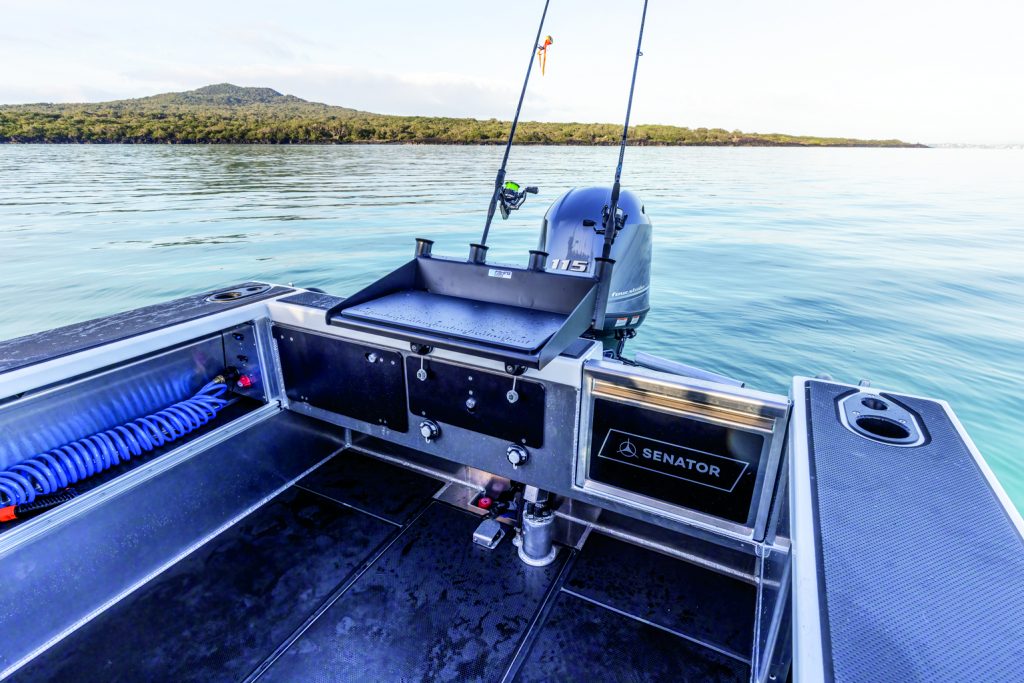
The transom is neatly arranged with a pair of transom lockers, one for storage and the other for the battery and fuel filter, and four Railblaza ports on the transom wall, two of which are used to secure the removable Senator bait table with its HDPE cutting board. The transom is pre-plumbed for an optional demountable live bait tank module, there’s a sump along the centreline aft containing the bilge pump, and the boat is fitted with a fuel tank surge chamber to make fuel fills quicker and easier and eliminate blowbacks. Fuel capacity underfloor is 160 litres.
The review boat, supplied by Rhys Sutton and Fishing Boats NZ, is their demonstrator, so it was fitted with a 115hp Yamaha. However, the easily driven 550 goes very nicely with a 90hp outboard, which is a cheaper option, says Sutton.
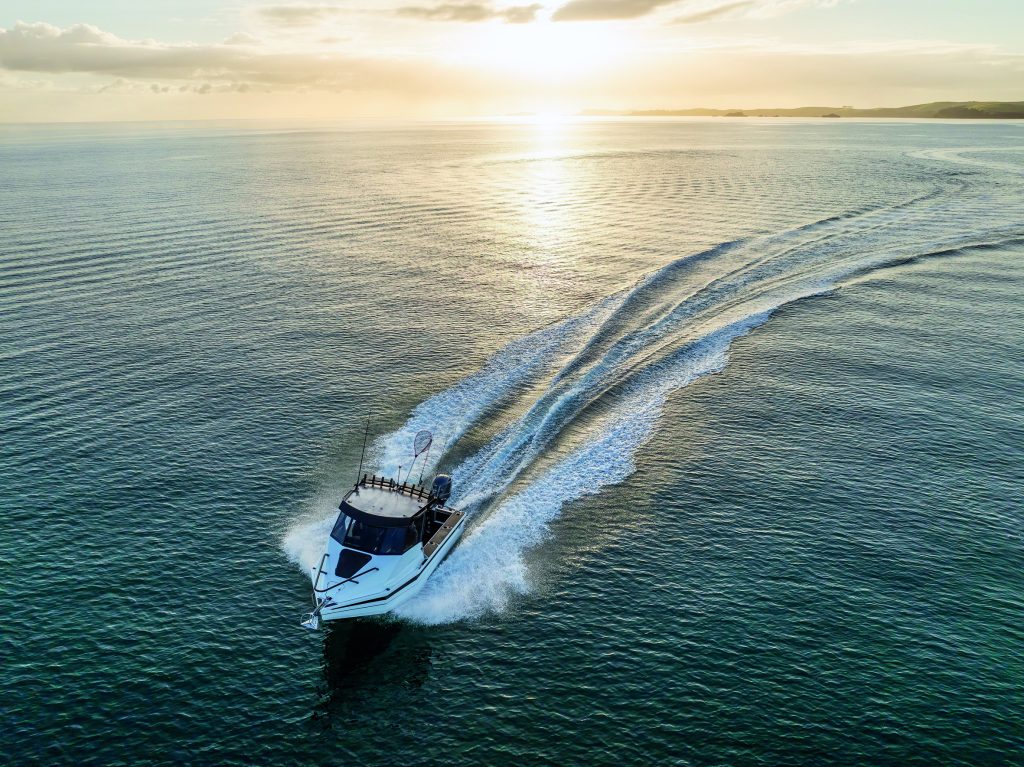
Performance with the 115hp Yamaha is good. We were happy cruising at 30 knots at 5,200rpm, burning fuel at a rate of around 26.3 litres an hour, but the boat planes at 14 knots, and at 23 knots, it’s burning just 19 litres per hour. We achieved a maximum speed of 35 knots at 6,000rpm.
Like the 500, the 550 feels solidly built. With 5mm hull plates, 3mm pontoons and a mix of 4mm and 5mm thick alloy for the sides, decks and superstructure, the boat is stiff and exhibits minimal noise underway. Noise dampening is helped by the foam-filled buoyancy chambers in the pontoons and under the floor, totalling 1523 litres in capacity.
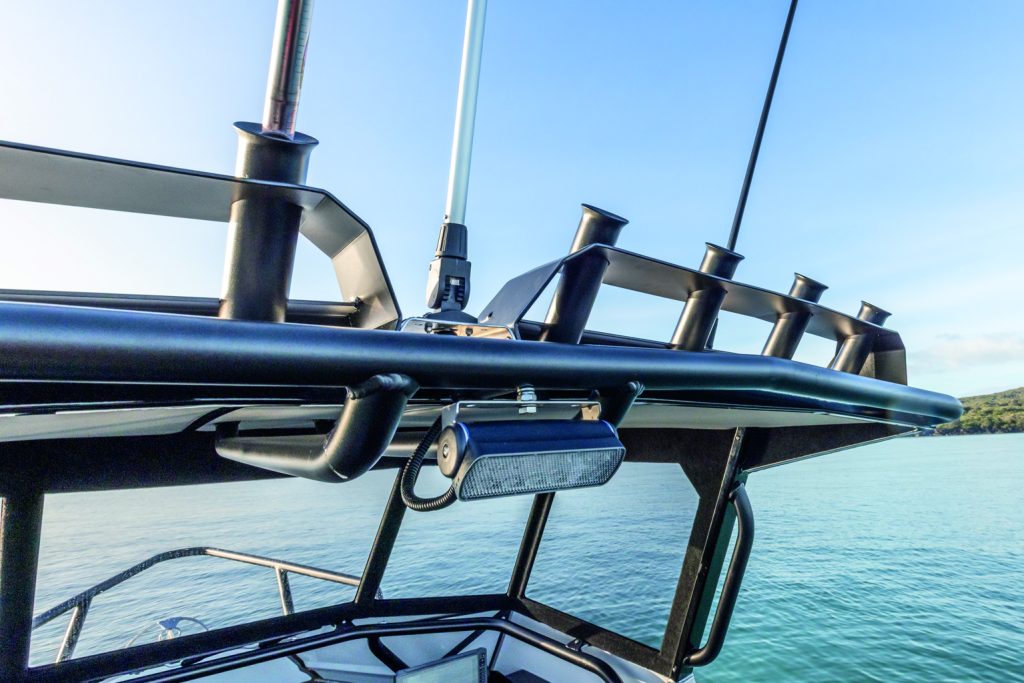
Senator Boats’ pontoon chine profile does an excellent job of diverting spray away from the boat, while the entry makes a decent fist of softening the ride but still provides plenty of hull volume in the bows. The boat tracks nicely and should be a safe choice for bar crossings and surf launchings.
Underway, the hydraulic steering felt premium, and overall, the boat was a pleasure to helm. It performs and handles like a bigger vessel but delivers all the advantages of a smaller one: ease of handling at the boat ramp, easier towing on a single-axle trailer, and a lower entry price.

I was also impressed by the boat’s build quality and presentation, helped to some degree by the vinyl wrap, which is optional. I also like the modular idea, with so many different factory options available for personalising your boat. It’s a concept that’s proving a smash hit with Senator’s customers.
Conclusion
The Senator 550 hardtop is an appealing option for fishers and families. Offering shelter from the elements in a hardtop with good headroom and excellent vision through the glass windscreens, it benefits from plenty of cockpit space, ample freeboard, high gunwales, and exceptional stability.
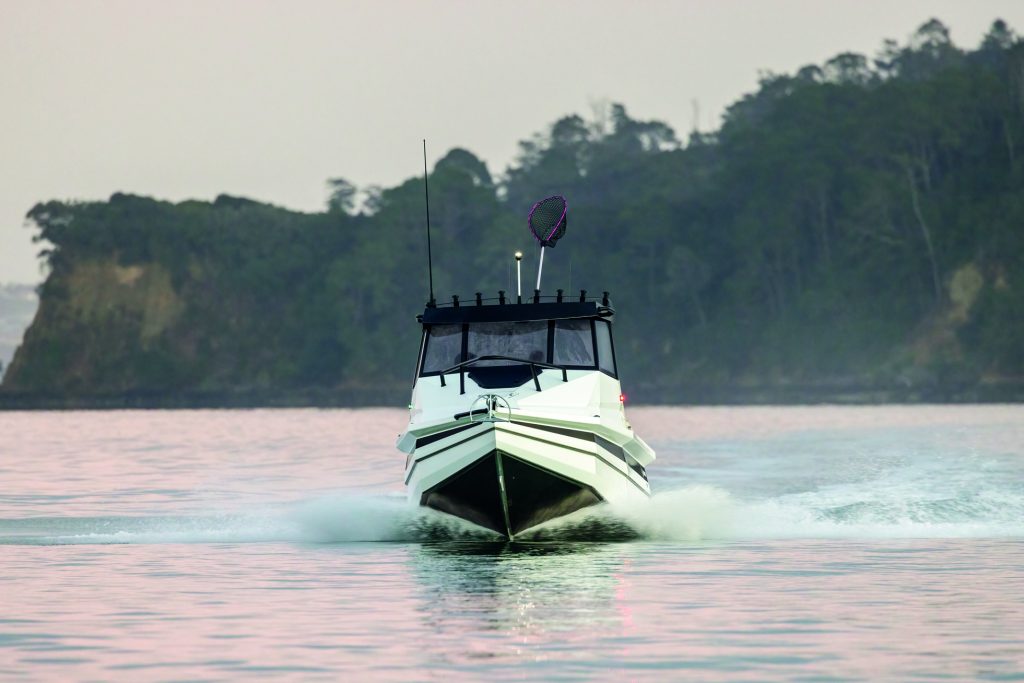
With heaps of interior volume and a configurable modular layout, generous storage, and a pontoon hull design that delivers a comfortable, dry ride, the Senator 550 hits a sweet spot. It’s well finished, strongly built, and easily towed on a single-axle trailer. It performs well, even with 90hp, and is big enough for the family or
a bunch of fishing and diving mates. What’s not to like?
